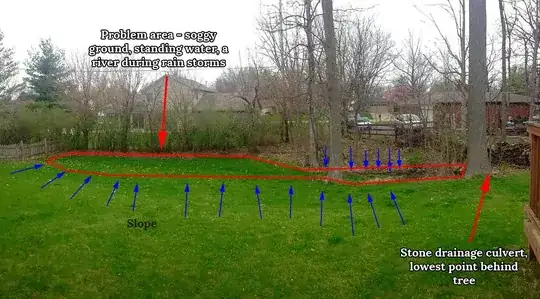I just bought a house a couple of months ago, and like many suburban lots, the property has a drainage easement that runs along the sides. One side has a stone culvert pipe that moves water away from the property, the other side appears to have no particular drainage method, other than slightly sloping toward the culvert. The latter side is constantly soggy and muddy, with standing water, and it turns into a veritable river during rainstorms. I attached an image below showing the slope of the yard and the problem area.
I'm going to contact the county surveyor to see if they will do anything since the easement is not draining correctly (I don't see how it ever did in the first place - the house is 14 years old). But, assuming they won't do anything, is there a particular fix that works best for these side-property drainage easements? I've looked into french ditches, re-sodding, and laying perforated pipe - it's difficult to know which method has the best chance of working.
EDIT: There have been other questions on this site regarding pooling of water near the house - I'm referring specifically to a faulty drainage easement along an entire side.
